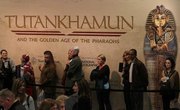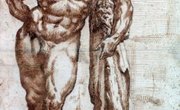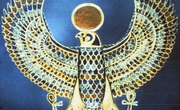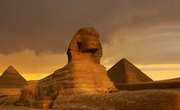Though “The Mummy's Curse” sounds like an old horror movie, it was actually a widely believed phenomenon long before the discovery of Tutankhamun's tomb by Howard Carter in 1922. Themes of mummy curses appeared in popular books and short stories decades previously -- and probably started with the macabre habits of Victorian era mummy aficionados, who collected them as souvenirs and held mummy unwrapping parties.
King Tut
Many people have asked, “why Tut?” and not the millions of other mummies whose tombs were violated by local thieves and European explorers alike. If opening tombs was so risky why weren't people dropping dead like flies at mummy unwrapping parties or from ingesting mummy powder as medicine? One answer, posited in 1924 by Professor J. S. Mardrus, a French Egyptologist, is that Tut's tomb was the first intact tomb opened in modern times, and therefore, the curse fell squarely upon the shoulders of those who opened it. He believed that the curse was real, and dismissed questions arising over curses involving other mummies, saying they had already fallen upon ancient looters and had no further power against modern tomb raiders.
The Unexpected Power of a Canary
In truth, no inscription existed within the tomb that could remotely imply a curse. What likely started the curse, was Howard Carter's pet canary, which he brought with him to the dig site. Since southern Egypt has few songbirds, the canary was considered exotic and garnered much attention by locals. When, the day after opening King Tut's burial shrines, Carter's “golden bird” was eaten by a cobra -- the snake-emblem, or uraeus, of the crown of the pharaoh -- workers considered it an ill-omen. Newspapers around the world carried the story of the British canary devoured by the “protector of the dead king” and a curse was born.
Numbering the Dead
Despite sensational attempts to tie almost any fatality to the “Mummy's Curse,” few people connected to the discovery or excavation of Tut's tomb actually died before nature would have claimed them anyway. Of those, Lord Carnarvon -- the project's backer -- was the first to attract attention. He died in 1923, within the year of participating in the opening of Tut's shrines. What the press failed to report was that Lord Carnarvon had various illnesses for nearly 20 years before his death. Of the 22 people present at the tomb opening in 1922, only six actually died within a dozen years of that event. Of the 22 present at the opening of the sarcophagus in 1924, only two died within the next decade. Of the 10 people present when the mummy was unwrapped in 1925, all were still alive in 1934.
Who Died and How
Mysterious deaths linked to King Tut's imagined curse were rare. Of those actually present during the excavation, aside from Lord Carnarvon, only A.C. Mace and Richard Bethel, Carter's personal secretary, died under unusual circumstances. Mace died of arsenic poisoning in 1928, and Bethel was found smothered in his bed in 1929. Lord Carnarvon's daughter, Lady Evelyn (Herbert) Beauchamp, was still alive and well 58 years later. Other “victims” had little or no genuine association with the tomb excavations or its discoverers, or they died far from Egypt -- many of them decades later, when they were quite elderly, such as radiologist Sir Archibald Douglas Reid who was claimed as a victim of the curse because he agreed to X-ray the mummy before he died. Friends and associates of Lord Carnarvon -- George Jay Gould and Woolf Joel did die soon after visiting the tomb, but not in Egypt and their deaths came from malaria and a gunshot wound, respectively. Most other deaths were attributed to the ravages of time or natural causes.










